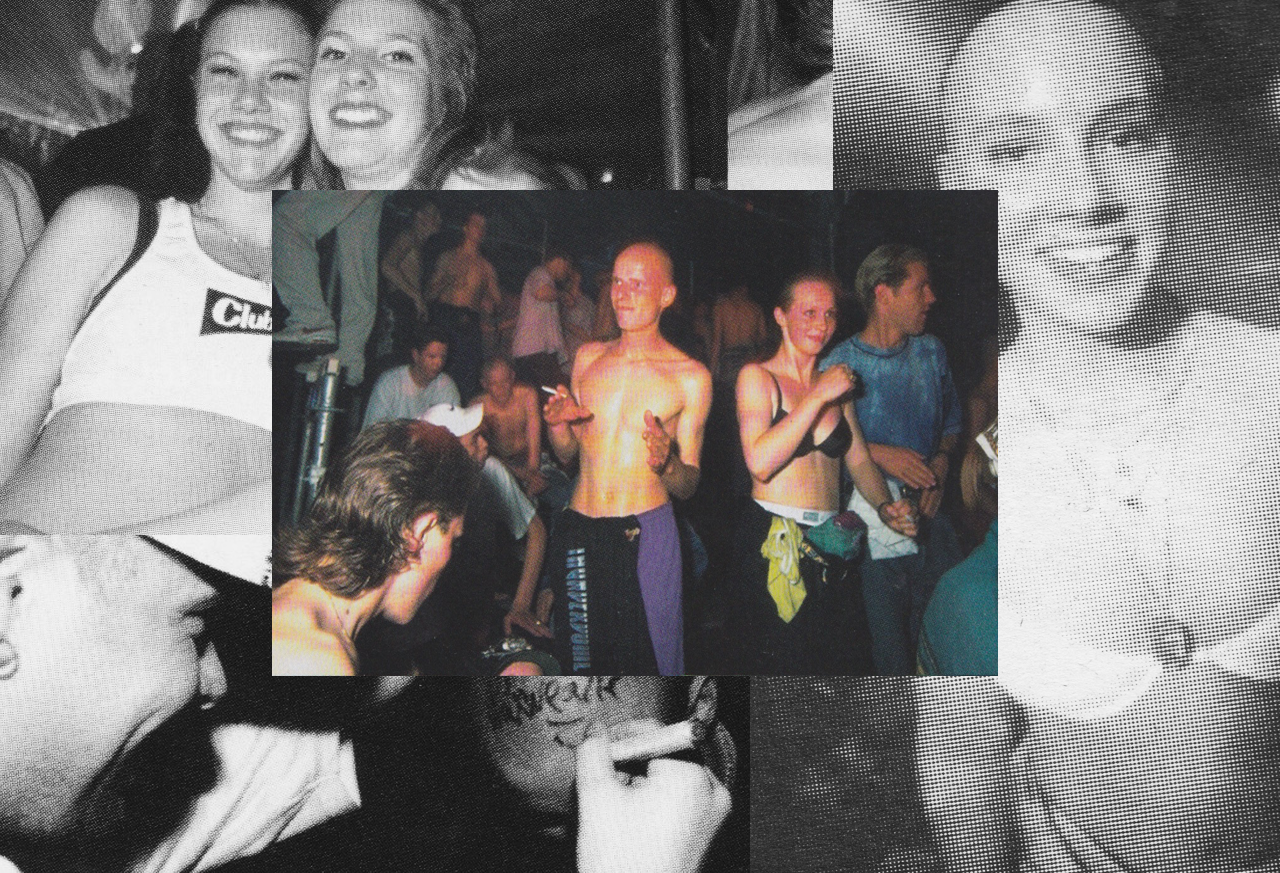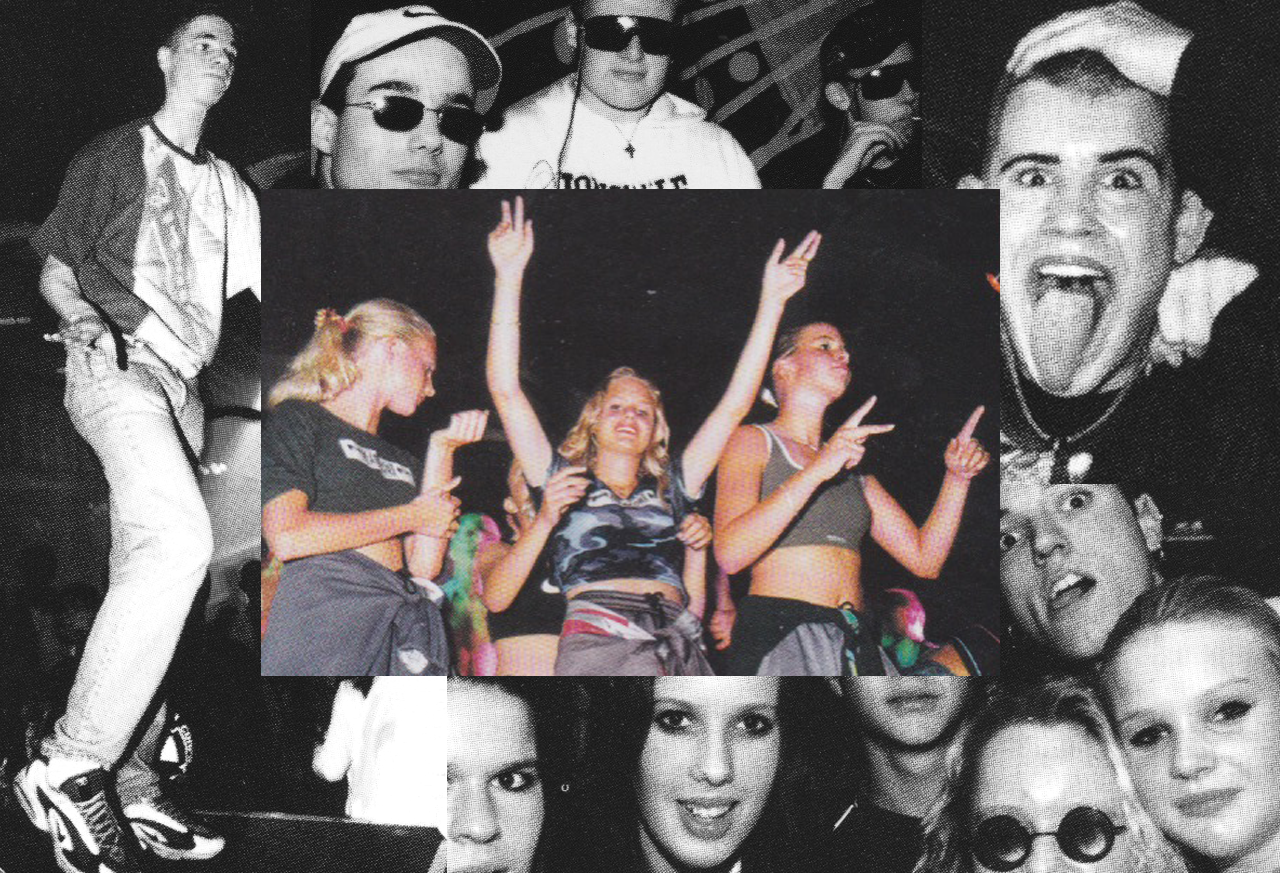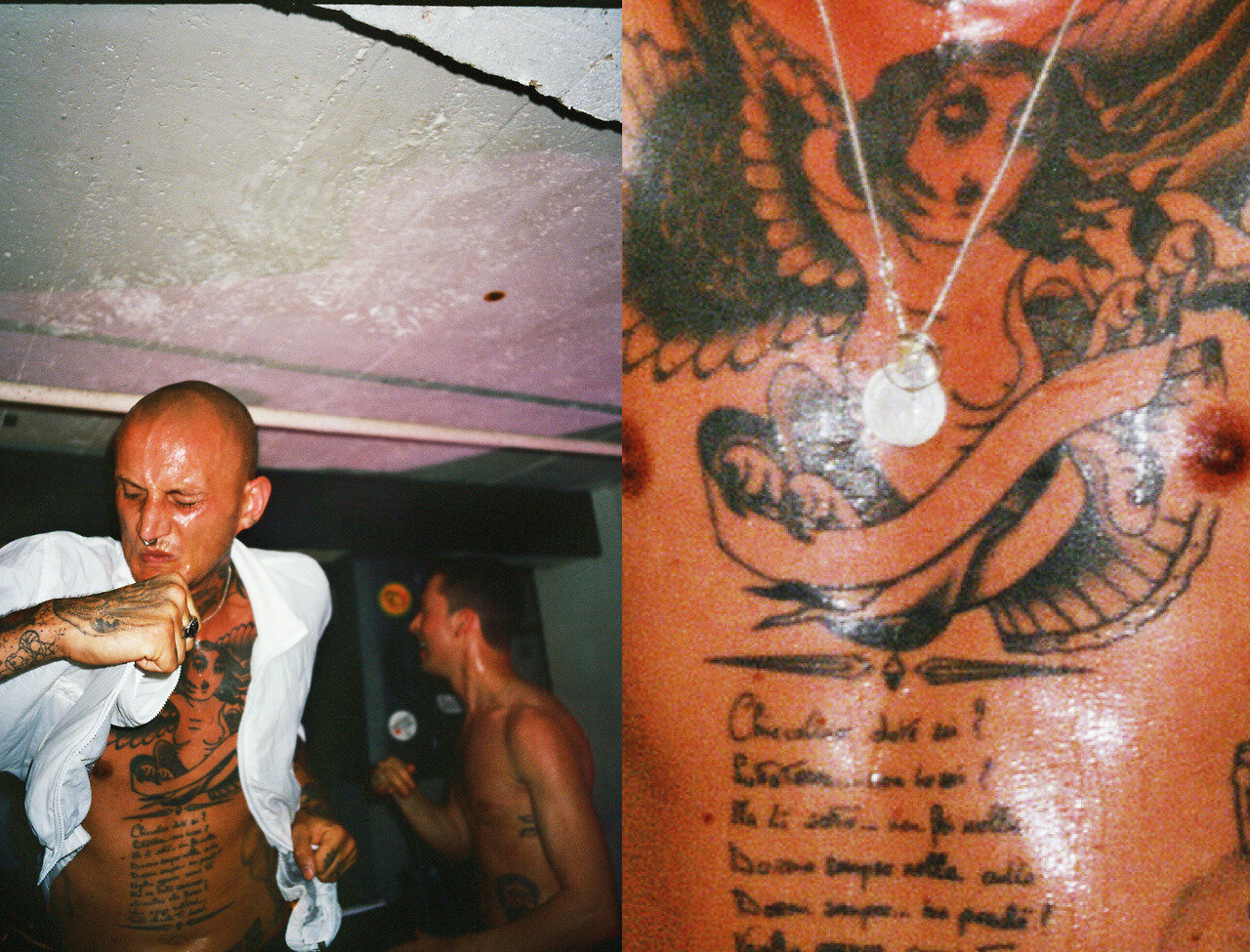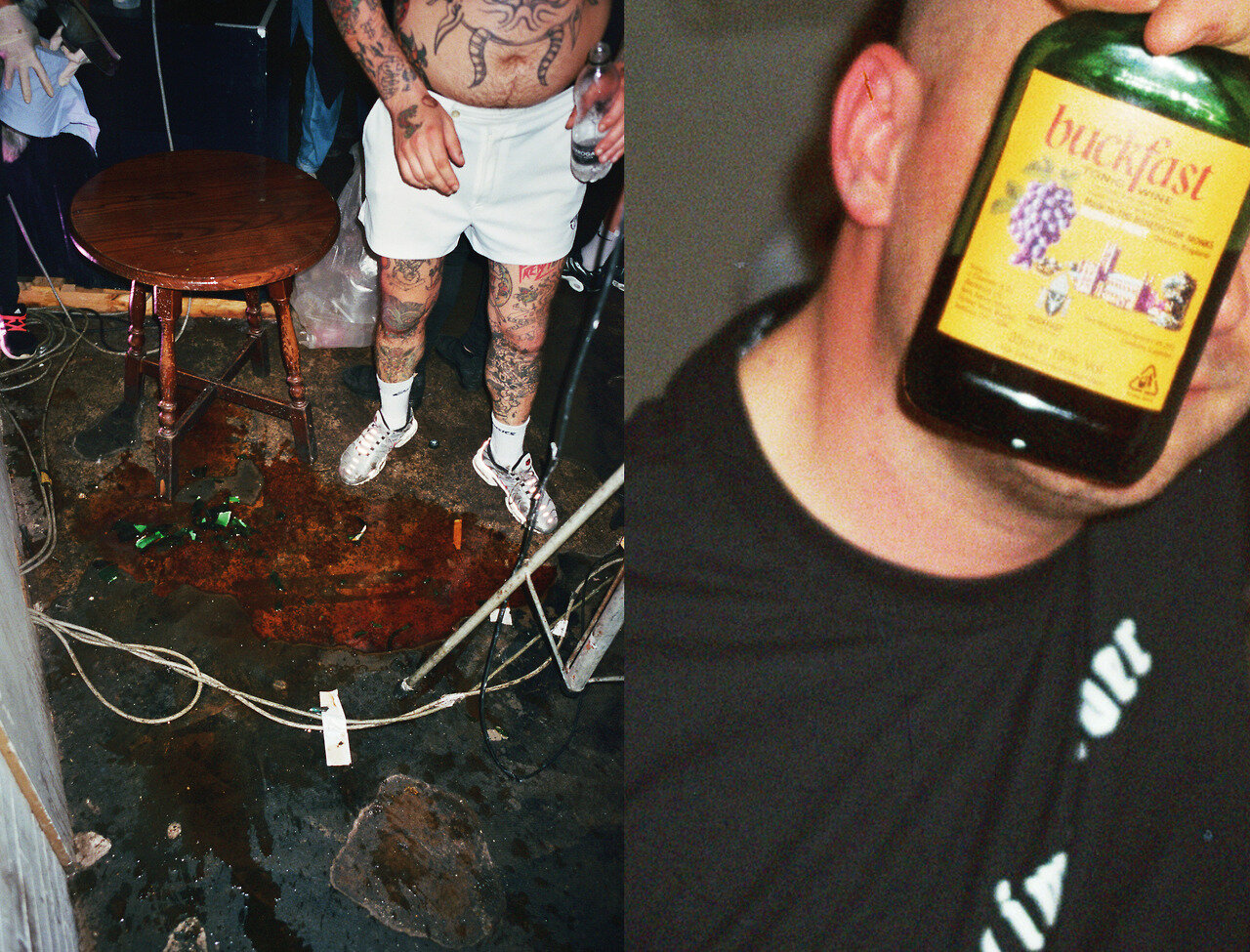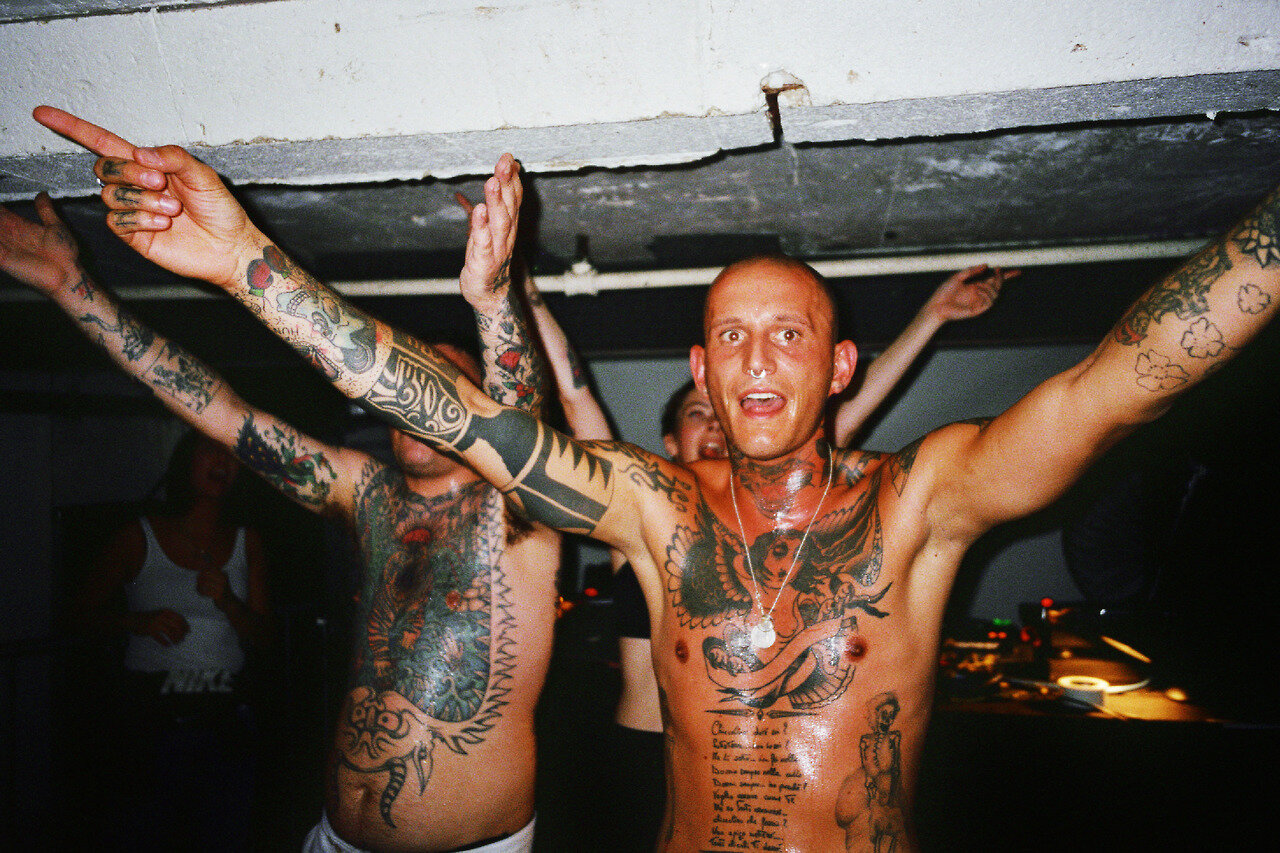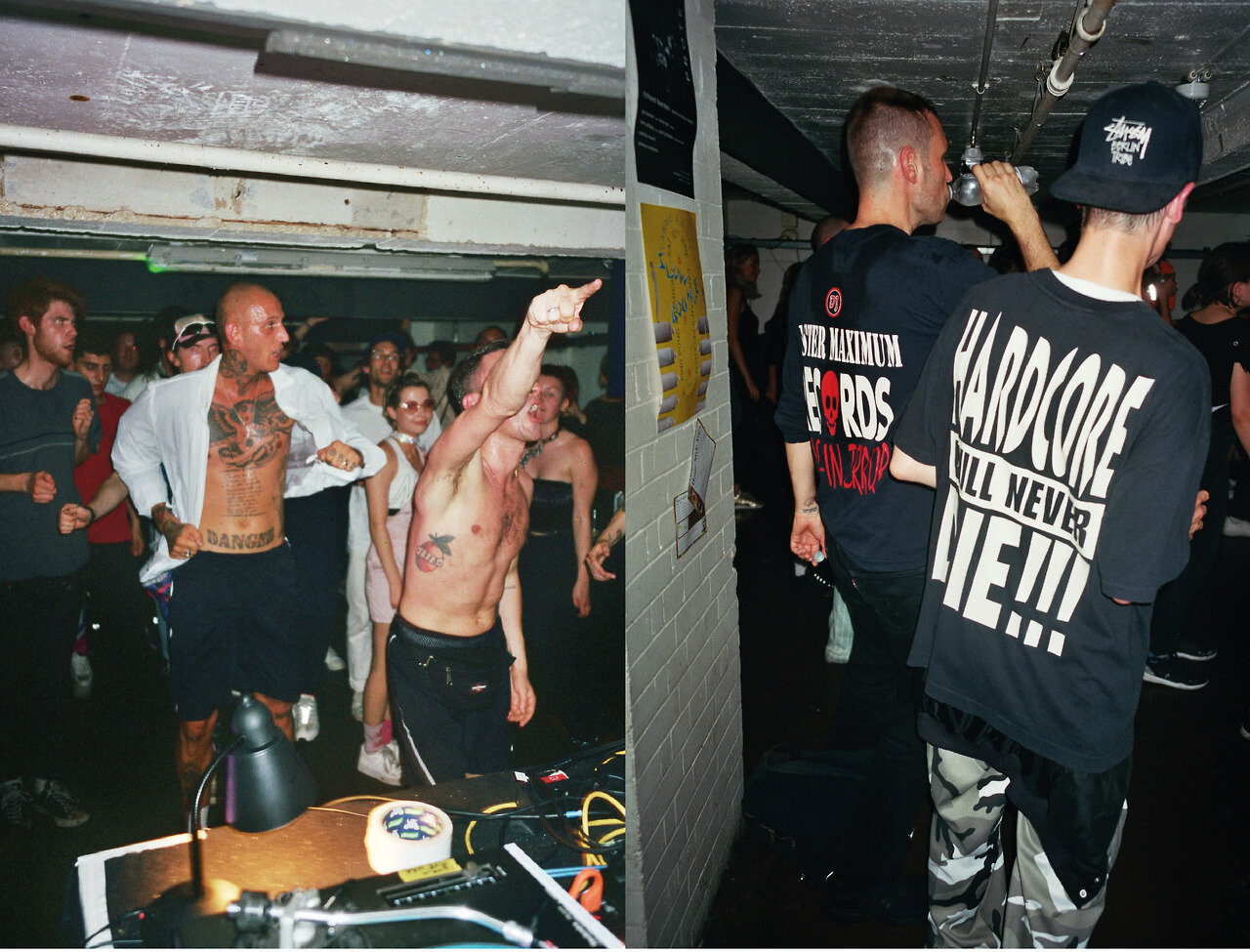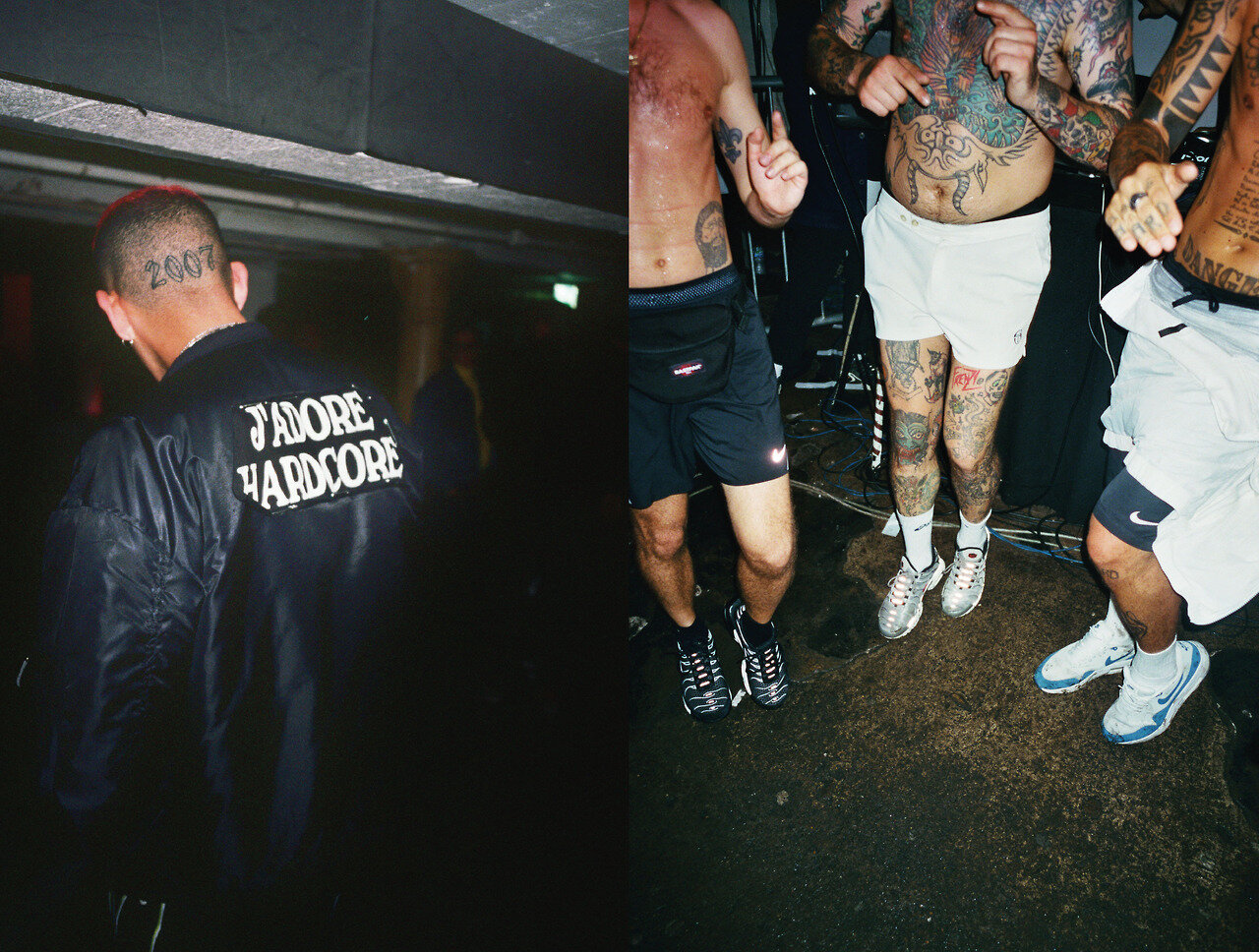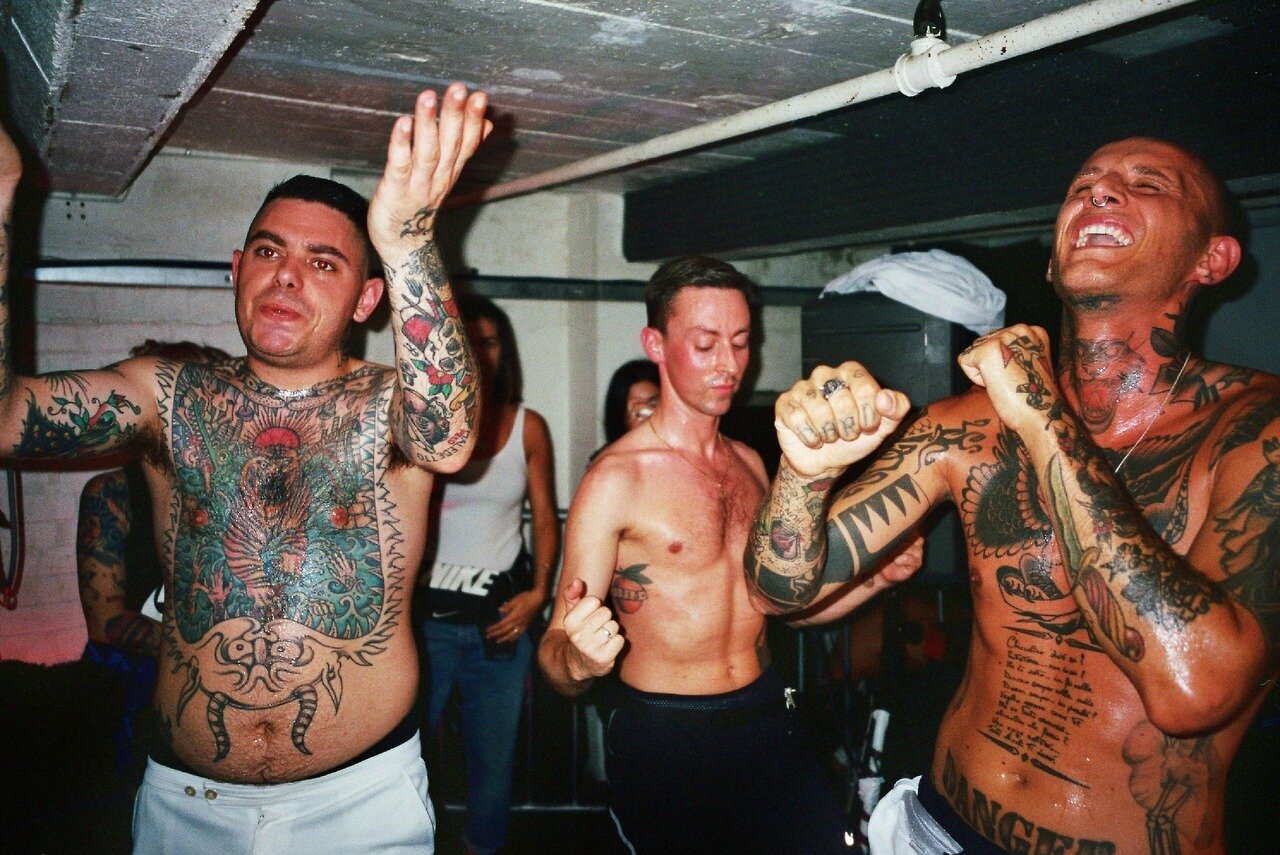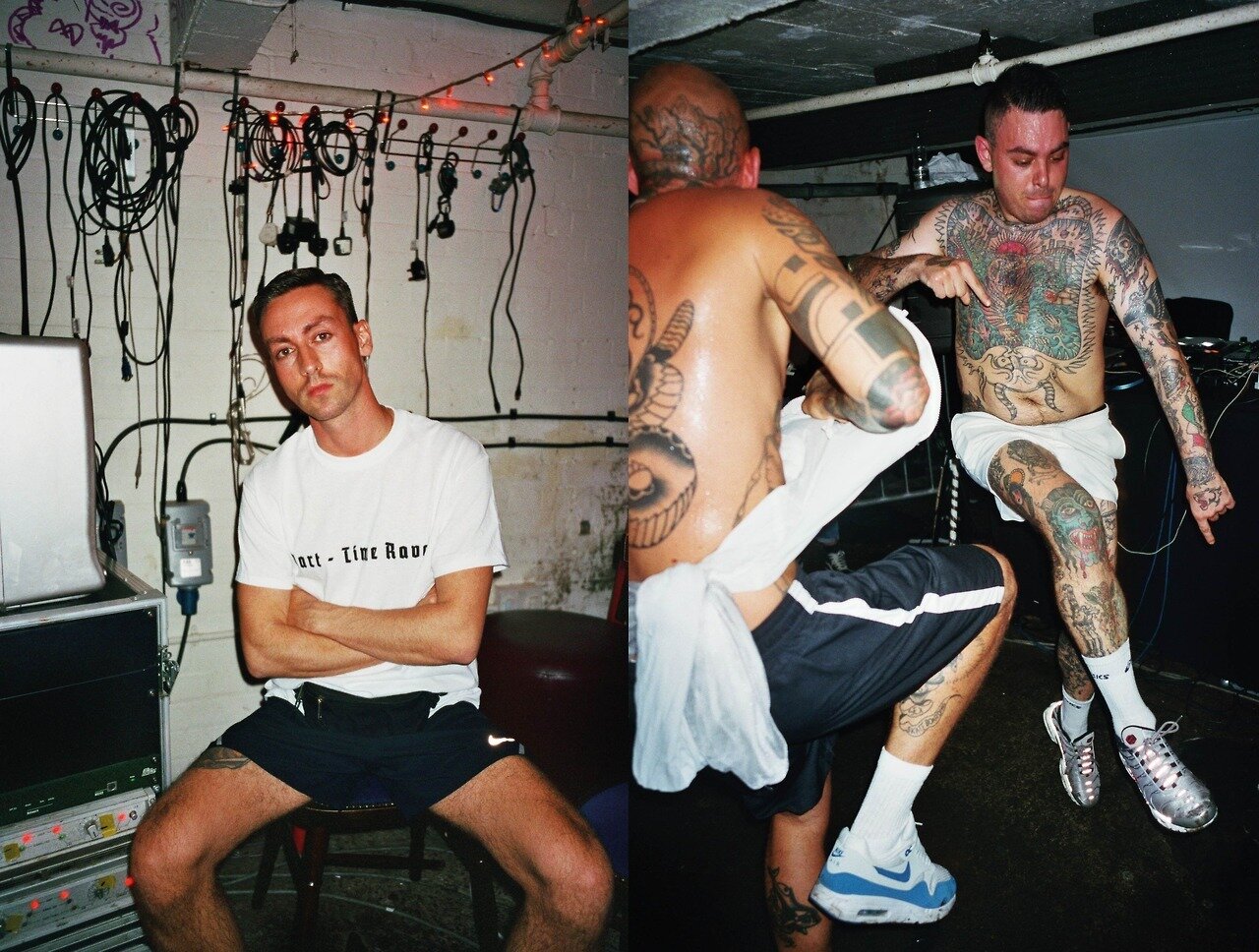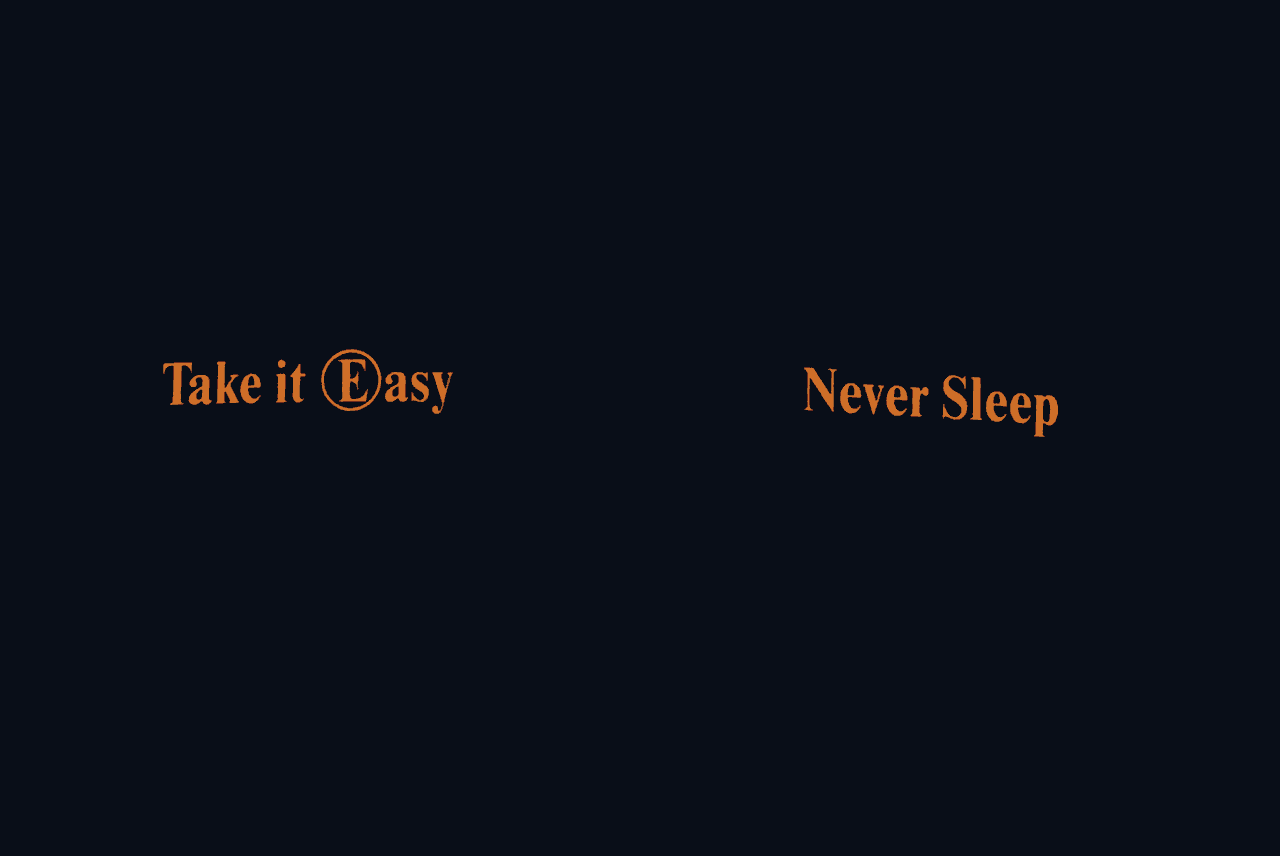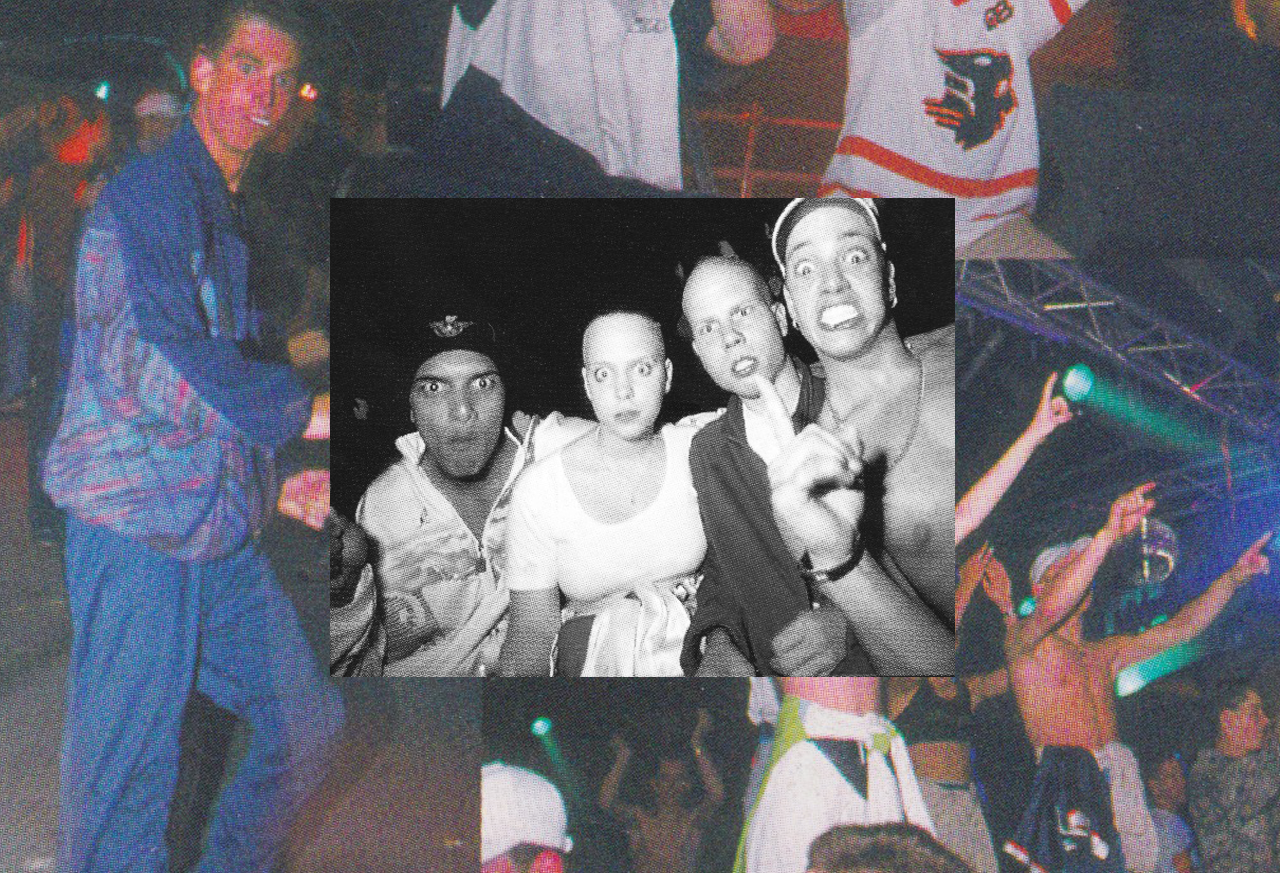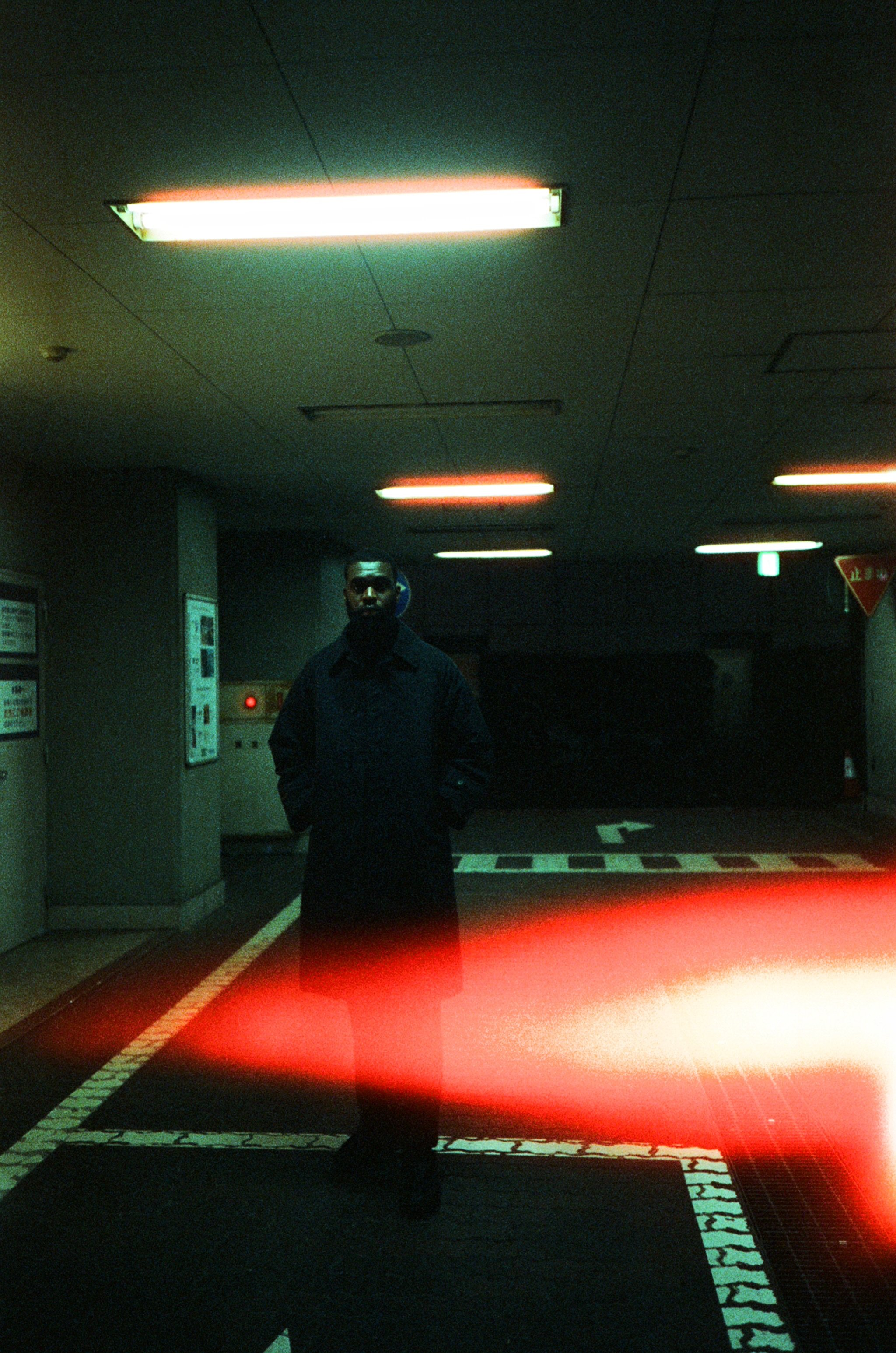THE POST-RAVE REVOLUTION OF GABBA: An interview With Gabber Eleganza On The Timeless Anthem Of A Generation

Like millions of kids born in the 80s, music was my primary form of escapism. I was a teenager in the 90’s neo-liberal capitalist city of Johannesburg, and at around the age of fourteen snuck out to my first rave to thunder the night away with friends in an abandoned factory on Jeppe Street. The sweat, neon, pacifiers, psychedelics, stimulants, cuddle puddles, chill rooms and sambuca laced jelly mixed with electronic beats was an intoxicating escape. Outside, the streets burned with protest and post-apartheid South Africa teetered on the brink of a civil war.
These grassroots, anti-establishment and unlicensed raves were a response to cultural tensions exactly like the ones we face today and an up yours to the conservative establishment of the time. Out of these pre-internet subcultures across the US, Africa and Europe, mushroomed secret flyers, musical innovation, social identity, experimental fashion and alternative cultural production.
Raving became a celebration of a childlike existence, of independence and connection, of solidarity and socializing, embracing a utopian society which only existed in our heads.
Hardcore, Rave and Gabber Advertising between 1996 and 1998
Inevitably, Raves in their original form become commodified, were commercially hijacked and heard in branded parties, posh up-scale restaurants, bourgeoise spin classes and mass video games, departing significantly from their original form and function. Fortunately, instead of eliminating rave culture, which merged with contemporary club culture, the social movement split into various underground subcultures and spread beyond late night parties into an alternative lifestyle resurrected underground through art, cultural production and chat rooms. It was these offshoots which re-established the authenticity, ethos and social organization of the original D-I-Y rave culture.
One of the most defining and arguably important subcultures emerging out of this 20th century rave scene was the cultural phenomenon called Gabber.
Kids from the Gabber Scene 1997 Pics from Thunder Magazine by Mirko Kuit
Gabber, meaning friend in Yiddish, is a Dutch version of Hardcore techno, corrugated, atonal and viciously fast techno with a frenzied deep and happy do-it-yourself ethos anthem of a lost generation of apolitical outsiders, Feyenoord fans, pill gobbling ravers, skinheads in tracksuits and sneakers, lovers of techno with a tougher industrial and distorted sound. Think bright neon matching tracksuits, Nike Air Max, lo-fi videos and ravers kicking it to relentless beats that are pushing 190bpm.
Gabber is not only a kind of music, but also a dress code, a way of speaking, a style of dancing, a way of living. Gabba is subculture. – For the Love of Gabba
Gabber Scene 1997 Pics from Thunder Magazine by Mirko Kuit
In the mid to late 90’s the movement was commercialized by ID&T, a large Dutch entertainment company and soon DJ’s became international celebrities. By 2000 fashionistas were battered with jackhammer Gabber in a Raf Simons SS00 runway show in Paris. The culture imploded and people began to associate “gabbas” with parodies like Hakkuhbar and Gabba Piet which were blasted across television screens and mainstream media. This turned Gabber culture into a caricature. The media began to spin stories about hooligans and nihilism, youth addicted to fantasy lives based on diets of violent video games, horror films and drugs. The rise of neo-fascist groups and politicized Gabbers altered the aesthetic, style and subculture’s original principles of friendship, empathy, inclusivity and community. Skinheads, boot boys and hooligans became the media’s poster boys of the Gabber scene, a far cry from the original ravers of the early 90’s.
Pics from Gabber Eleganza performing “The Hakke Show“ in London. June 8th at Rye Wax, Peckham by Toni Brugnoli x MONO+
The scene never disappeared, it got smaller and moved underground for Gabbers who took on the traditional style and codes of conduct and were devoted to dance, with friends - and Progressive Gabba or Soul Hardcore was born. This resulted in a new generation that grew up with Gabber 2.0 and its myriad hardstyle cousins, speedcore, terrorcore, Frenchcore and happy hardcore all cultivating alternative sounds and audiences, while all the while sounding alien to outsiders.
Gabba Scene 1997 Pics from Thunder Magazine by Mirko Kuit
I wanted to speak to a original 90’s Gabber, someone who has performed heavy kicks whilst having his ears jack-hammered by heavy beats. I tracked down Alberto Guerrini, also known as Gabberelaganza, a cultural leader of Gabber, a polymath artist, activist and anarchist behind the colorful gabbereleganza Tumblr and zine Gabber, in the Name of Love. Gabbereleganza’s glorious Tumblr archive launched in 2011, which started out as a way to collate the lost photographs and artworks from the Gabber scene has been described as “one of the internet’s most informative and abundant research vaults of dancefloor memorialization”.
Never Sleep, launched in the Spring 2019, is the new label platform curated by Gabber Eleganza: books, fanzines, records and merchandise garments.
Guerrini has recently been bridging the gap between the Gabber aesthetic and sound, releasing his debut EP Never Sleep Vol. 1 on Lorenzo Senni’s Presto?! label and presiding over the “curative party series” Part Time Raver. What started as a blog has since grown to encompass a research platform, live performance and even a book celebrating hardcore culture. I caught up with Gabbereleganza to ask him about his childhood influences and his gateway he has created into the underground scene of Gabber.
CAN YOU TELL THE SABUKARU READERS A BIT ABOUT YOURSELF?
My name is Alberto Guerrin, an Italian DJ, researcher and artist based in Berlin. I'm a rave culture aficionado, obsessed by subcultures and by the countercultural movement.
WHAT INTIALLY ATTRACTED YOU TO GABBA MUSIC?
I discovered Hardcore music for the first time when I was 11 or 12 at local Luna Park. This crazy attraction had a huge and loud sound system pumping hard house and hardcore. I was immediately attracted to the alien, video-game like music. It was like a punch directly in my face. Magical. I felt the same connection a couple of years later when I saw the first Gabber, that pragmatic style made me fall in love.
WHAT IS THE VISION OF YOUR BLOG GABBERELEGANZA?
My archive is a personal vision of my roots and my research. My purpose was to change the stereotypes behind rave subcultures and Gabber especially, by remixing and reworking old material focused mostly on the aesthetic and visual narrative of rave culture.
ARE WE IN THE MIDST OF A POST-RAVE GABBA REVOLUTION?
MY LAST DAY AT SEVENTEEN by Doug Dubois
Gabba never left us. The interest of the media cultural system has only noticed us now. Personally, I don't think is a revival. Actually progressive Gabber / Hardcore Soul is original thinking, taking something from the past and remixing it as new, it’s a post-modern approach.
WHAT ROLE DOES GABBERELEGANZA PLAY IN PRESERVING GABBA SUBCULTURE?
My archive is not a real archive, because a real archivist would know all the sides of the subjects! Meanwhile my approach is more artistic, with a very personal and intimate vision. I started to curate my blog as an art-gallery. So in this way I am preserving something from the past, but with a contemporary language, which keeps it relevant.
YOU MENTION THE WORK OF FILIPPO MINELLI (PADANIA CLASSICS 2010) AS A KEY INFLUENCE IN YOUR WORK. HOW WAS BEING RAISED IN POST-INDUSTRIAL NORTHERN ITALY INFLUENTIAL FOR YOU AS AN ARTIST?
We come from the same area called Lombardia, this is the richest country in Italy. It has a huge fat rural area called “Pianura Padana” one of the most polluted landscapes in Europe. This is a working class city, filled with ugly concrete industry but also wild beautiful woods. A place filled with contrasts and paradox. Filippo captured all these contradictions from an architecture point of view and united it with social criticism, irony and art. I'm a big fan of this project because I immediately understand all his work and visually is the perfect real-life setting or Suburban Euphoria for the “Gabber Eleganza Kids.”
Gabber Kids1997 Pics from Thunder Magazine by Mirko Kuit
YOUR COLLECTIONS AND COLLABORATIONS (RAVE ME TENDER, FOR THE LOVE OF GABBA) PORTRAY PROGRESSIVE GABBA / HARDCORE SOUL AS ROOTED IN AN INTENSE SENSE OF COMMUNITY AND EMPATHY FOR OTHERS: HAS THE SCENE FUNCTIONED IN PART, AS A MEANS FOR RENEGOTIATING AND EXPLORING DIFFERENT PARADIGMS OF MASCULINITY?
Being a part of a subculture group is an anti-individualist estate so you embrace the group, the tribe, a safe space for you to feel free to be what you are. This works for all the marginalized groups and all the subcultures. Together as one. It’s not aggressive, like skinhead culture, but at the same time masculine and androgynous —the girls often dress like men. In the 90s, it was super simple. A white tracksuit with some texture, a bald head, maybe some rings. That’s it… Simple.
TELL US MORE ABOUT NEVER SLEEP, YOUR NEW LABEL AND PLATFORM LAUNCHED IN SPRING 2019
The label is an organic step after seeing the original Gabber Eleganza archival project grow into a multi-platform endeavor, with a remit to showcase new and old artists that symbolize not just rave and post-rave culture, but a wider DIY aesthetic.
YOU MENTION THAT THUNDER WAS THE HOLY GRAIL OF FAZINES IN THE 90’s, DID THIS INSPIRE YOUR DIY APPROACH FOR YOUR ZINE GABBER IN THE NAME OF LOVE?
I started my zine in 2009, because it was a cheap way to share my visual idea, especially for my generation in between pre-internet age and the internet boom. My blog/archive helped me to amplify my vision and re-start publishing books and new zines was the perfect organic step to pay respect to my culture and the do-it-yourself culture; an expression of your personal passion without profit purpose.
IF YOU COULD LEAVE OUR READERS WITH ONE MESSAGE, WHAT WOULD IT BE?
DANCE OR DIE
“Anti Acid-house propaganda” The Sun / Daily Express UK, ‘88
Youth movements like Raves are criticized by the establishment as having a political message of apathy. The culture has been accused of not being geared towards social change but rather individual abandonment through drugs. Primary goals, according to sociologists have historically focused on “resistance through indifference”. Dance subcultures have been portrayed merely as novel forms of depoliticized play in a postmodern pleasure dome. Is the Progressive Gabba or Soul Hardcore movement a countercultural resistance committed to freedom and self-expression or just a post-modern hedonistic pleasure dome filled with apathetic middle class kids?
After speaking with artist Gabber Eleganza it becomes evident that his archival platform examines raves as a social site with which to observe countercultural youth identity and resistance. Gabber Eleganza’s work provides a voyeuristic porthole into these communities, he manages to capture the vulnerability and authenticity of alternative youth spaces where deep and meaningful transformations can occur. If society continues to reduce cultural phenomena like Gabber to problematic behaviors and deviant lifestyles, it continues to belittle youth identity and forfeits the spaces needed for alternative cultural revolution, gender fluidity and human fulfillment to flourish.
1997 Pics from Thunder Magazine by Mirko Kuit
The contemporary resonance of Progressive Gabber is clear and it’s here to stay. Whether engineered for social change or merely abandonment, offline subcultures in the post-millennial world are a critical stepping stone for infinite generations in search of non-conformist identities and social freedom. As the planet burns and the mainstream dominates, the underground remains a space where the anthem of a generation plays out against the backdrop of infinite economic growth and mass extinction. In the words of Gabba Eleganza, Dance or Die.
About the author
S.A. Mayer is a writer and film critic, born in Bristol, raised in Johannesburg and is currently based between Rotterdam and Berlin.
Instagram: @sophiealexandramayer



